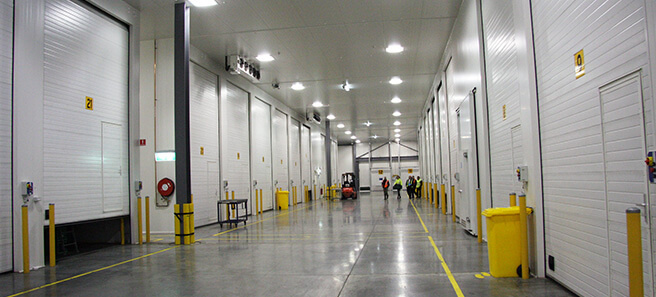There are a number of ways of reducing energy requirements of cool stores. Perhaps the most important is regularly checking the operating temperature of the room and considering whether this is the most cost-effective temperature for storage. For example, although the optimum storage temperature for many (non-chilling sensitive) products is close to zero, if they are only being stored for a short time then higher temperatures may be just as good. Monitoring the temperature will also indicate how often the system is defrosting and whether the cooling system is working effectively given external and internal heat sources.
Other possibilities include;
- Pre-cooling product before it is placed in storage reduces heat load on the equipment and permits use of a smaller refrigeration plant. It can be more energy efficient to pre-cool with forced air in one room, then transfer product to a less regularly accessed second cool room for longer term storage.
- Defrost the system regularly – ice build up on the evaporator greatly reduces efficiency. However, defrost cycles which overheat the air inside the cool store are also not desirable.
- In some areas it may be possible to focus on cooling well insulated, fully packed stores at night using off-peak power. During the day they can be fully sealed.
- Reduce fresh air exchange as much as possible – keep the door shut as much as possible, ensure door seals work well and check how air circulates through the cooling system
- Use LEDs for lighting and turn lights off when not in use
- Reflective paints applied to the outside of cool stores can reduce external heat load
- Ensure cool room insulation is intact – damp insulation is no longer insulating
